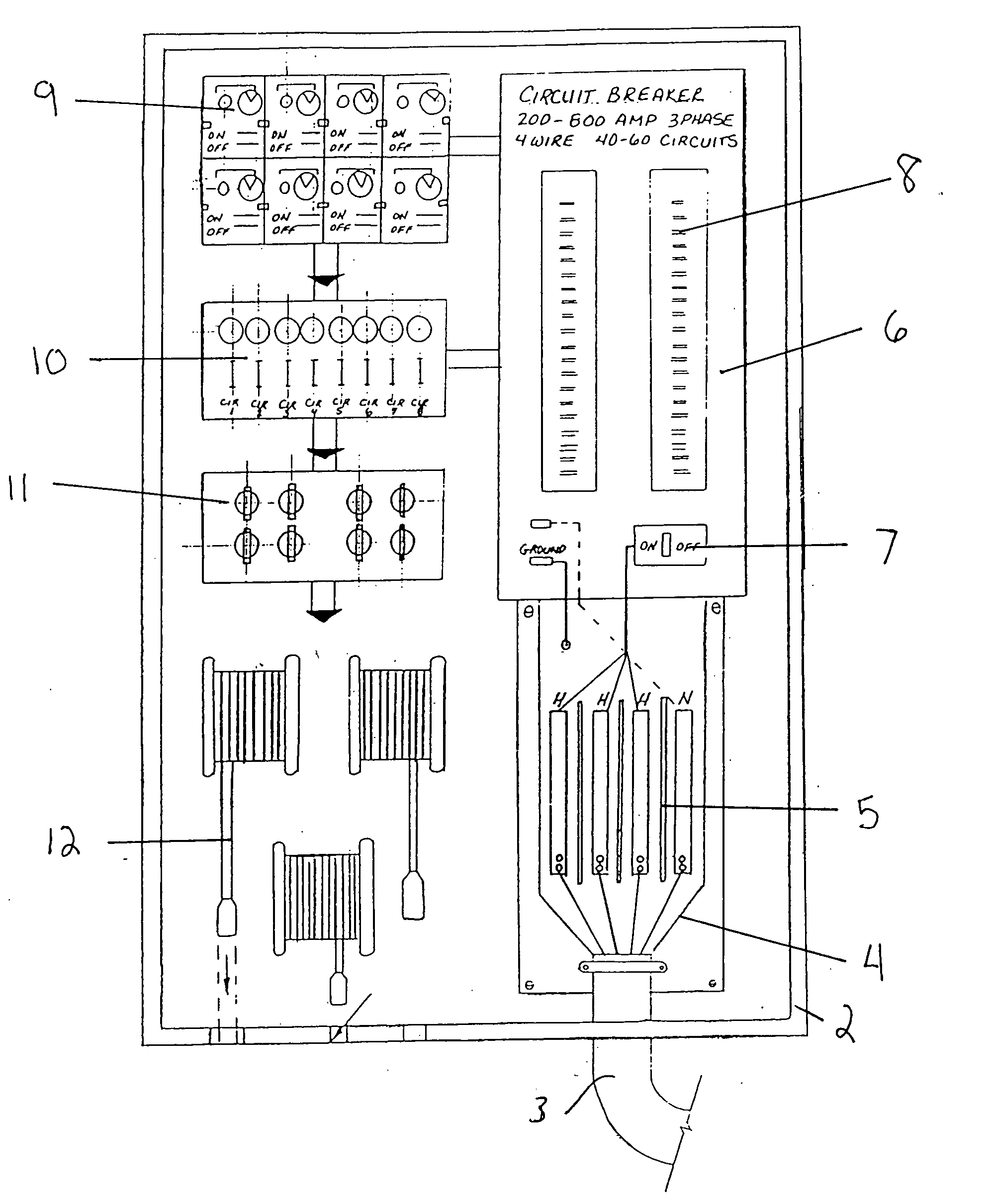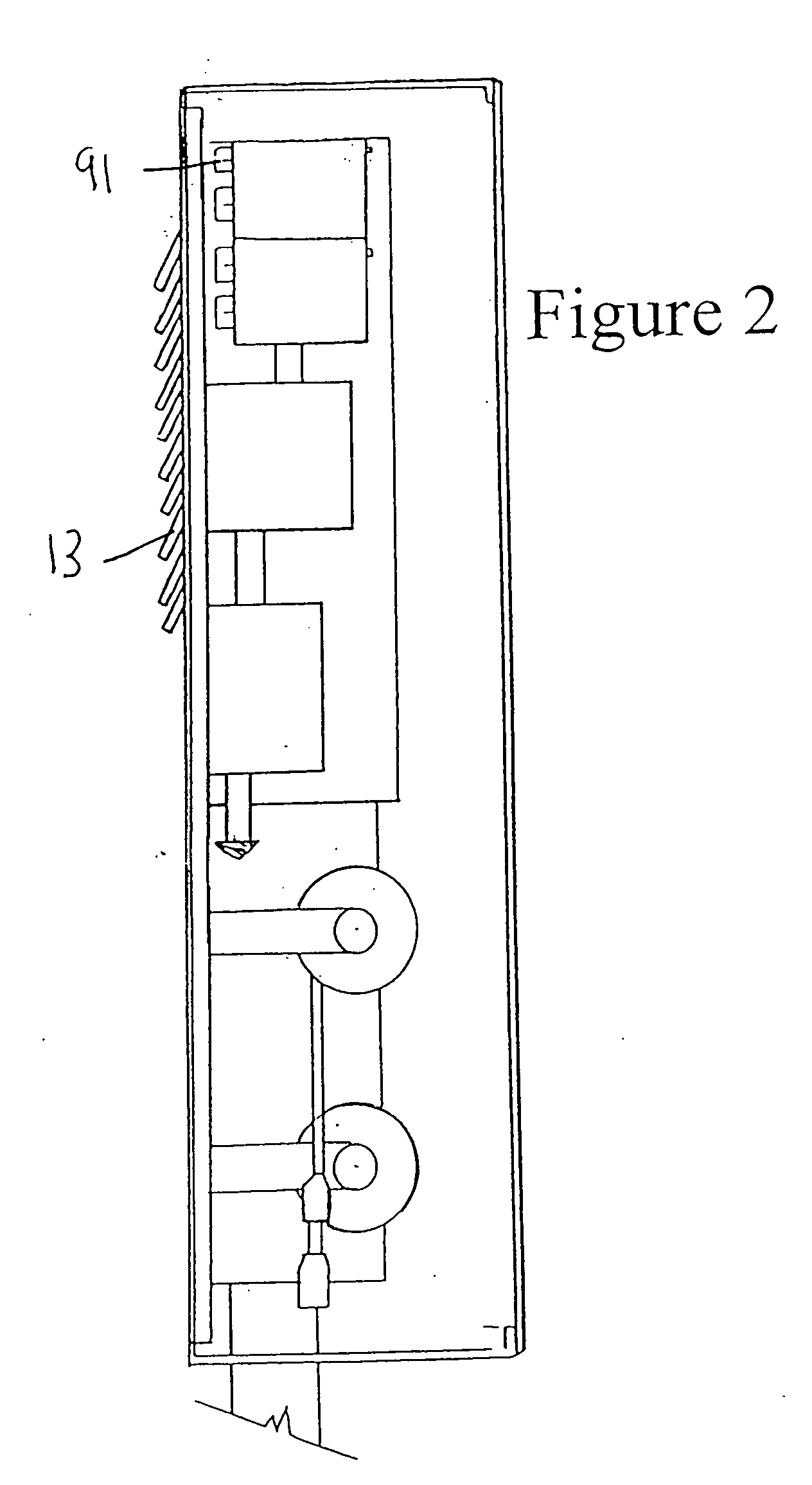Integrated, self-contained power distribution system
a power distribution system and self-contained technology, applied in the direction of substation/switching arrangement details, electrical equipment, substation/switching arrangement casings, etc., can solve the problems of large-scale construction, large-scale construction, and inability to meet the needs of emergency power sources, so as to facilitate repeatable, reusable wiring of power distribution circuits, and facilitate quick installation and removal.
- Summary
- Abstract
- Description
- Claims
- Application Information
AI Technical Summary
Benefits of technology
Problems solved by technology
Method used
Image
Examples
Embodiment Construction
[0039]The concept of the present invention is the provision of a substitute, temporary, power service and distribution system for the regular or permanent power distribution system. The temporary or alternate power service and distribution system is connected in parallel to the regular or permanent power distribution system, between the power company source and the actual distributed load being serviced.
[0040]The entire substitute or alternative system is contained in an integrated package, providing all of the necessary functions to be found in the permanent power distribution system. The definition of “integrated” as used in this application is a package that contains all the necessary functionality found with a particular permanent power distribution system for which the present invention is substituted.
[0041]The container, enclosure or overall package contains everything necessary for a connection to an electrical power source (such as the power company). The integrated package ...
PUM
 Login to View More
Login to View More Abstract
Description
Claims
Application Information
 Login to View More
Login to View More - R&D
- Intellectual Property
- Life Sciences
- Materials
- Tech Scout
- Unparalleled Data Quality
- Higher Quality Content
- 60% Fewer Hallucinations
Browse by: Latest US Patents, China's latest patents, Technical Efficacy Thesaurus, Application Domain, Technology Topic, Popular Technical Reports.
© 2025 PatSnap. All rights reserved.Legal|Privacy policy|Modern Slavery Act Transparency Statement|Sitemap|About US| Contact US: help@patsnap.com



